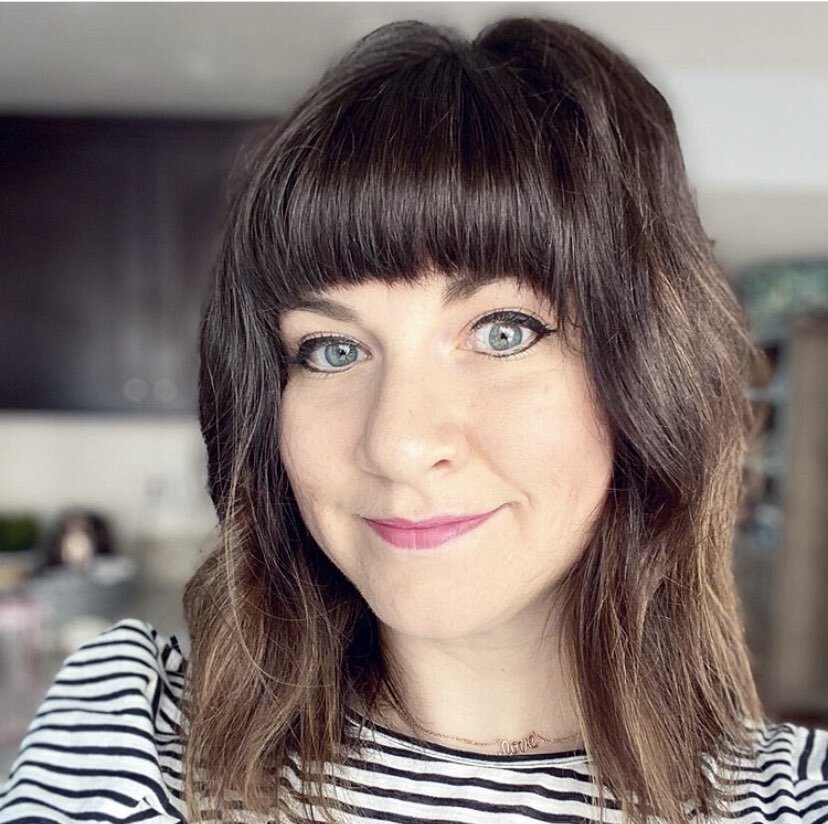TLDR: Brainstorming is awesome, but how can we create a better brainstorm session, one that focuses on the impact on our audience? I had a conversation with colleague and project manager, Joy Vetterlein, about her brainstorming method and distilled it all down into a template for you to grab and use for your next project.
This past weekend I shared a delightful conversation with my hope*writers colleague, Joy Vetterlein, all about creativity, brainstorming, and project management. I am super excited to introduce you to Joy and share a bit of our conversation with you.
Joy daylights as a project manager and creative consultant, but her passion lies in writing about unconventional spirituality for Christian misfits. She’s a bit quirky, smart as a whip, and easy to talk to — a combination that quite literally brings so much joy into my life. Here she is so you can put a face to the name:

I had her wear her project management hat for this conversation, but if you’re as intrigued by the term “Christian misfit” as I was when I first met her, do yourself a favor and head to her blog or Instagram. She has a knack for creating community on digital platforms and makes you feel like you belong, no matter what religious – or otherwise – box you may fall into.
Let’s dive into the topic at hand: brainstorming your inspired idea.
I’m a firm believer that brainstorming is a necessary step prior to starting any new project, whether it’s a product or offering, service, business idea, event, etc. And because we’re creative souls, we may “think” we’re good at brainstorming. But have you ever taken a close look at how you brainstorm?
Joy laid out her brainstorming process for me and I was so. excited. to hear her distill what can sometimes feel like an elusive merry-go-round into an actionable template to apply to any project (or “thing,” as I’ll refer to it throughout this post).
Here’s what I learned:
Start with the high-level stuff first
The most important questions to ask yourself (or your team) are the top tier vision-esque questions, the who/what/when/where/why. Establishing the overall goal of the project is step one for brainstorming with purpose and ensuring that your focus is on the impact your project will have on the intended audience.
A bit of brand strategy is important at this stage as well — clearly understanding your audience, their pain points and felt needs, what problem you’re trying to solve for them, and how they would like that problem solved.
The final question at this stage is gold: What do you want your audience to know, feel, and do after they interact with this thing, whatever it may be?
These questions act as a filter to weed out the unnecessary and hold in the important, aka the impact.
There’s also a good chance you’re coming to the table with expectations and assumptions about what you think your audience needs or wants, so trying to consider these questions from the point of view of your audience or ideal client can help create a bridge between what they want and what you can create for them.
Blue Sky vs. Constraints
With vision and purpose laid out, the next step is a bit of freewheeling dreaming. If the sky were the limit – aka money is no object – what would you want to create?
Joy suggests not spending too much time on this part, mostly because the next step is determining the project constraints and available resources. Is there a timeline? Budget? Will you need fancy software or to outsource anything? It always stinks to come up with an idea that you can’t always execute given what resources you have available to you, so keep that in mind.
Envision the Outcome
Consider the audience’s experience as they interact with your thing. Literally, close your eyes and pretend you are your customer, about to purchase the thing or walk into the event or click through to your website. Walk yourself through every detail from the initial introduction to the final moments of interaction. If your thing is a product, what will the buying process look and feel like? What’s the unboxing experience like? If it’s a download, what’s included? If it’s an event, what are all the little details you see in your mind’s eye as you walk through the venue?
This kind of brainstorming helps you categorize the to-dos and tasks that will bring your idea to fruition. Without this step of the process, you might miss out on small details that will level up your project and provide additional impact for your audience.
You are not a bad artist or creative human for abandoning an idea. Be a realist in your brainstorming process. I literally hate that I’m typing these words because so much of who I am is not a realist. I prefer to dream about all the big possibilities and exciting opportunities that may or may not exist or even be possible.
The realist parts of ourselves or the realist members of our team are the ones who get the job done.
And when you can drill down on the important parts of your thing from the perspective of your audience and brainstorm within the constraints of what is actually possible for you to achieve, that’s where you’ll find the impact and value.
To help you utilize this brainstorming process, I’ve created a printable template for you to grab and craft your own inspired ideas with. Find it in the Think Tank Resources Library!

+ COMMENTS